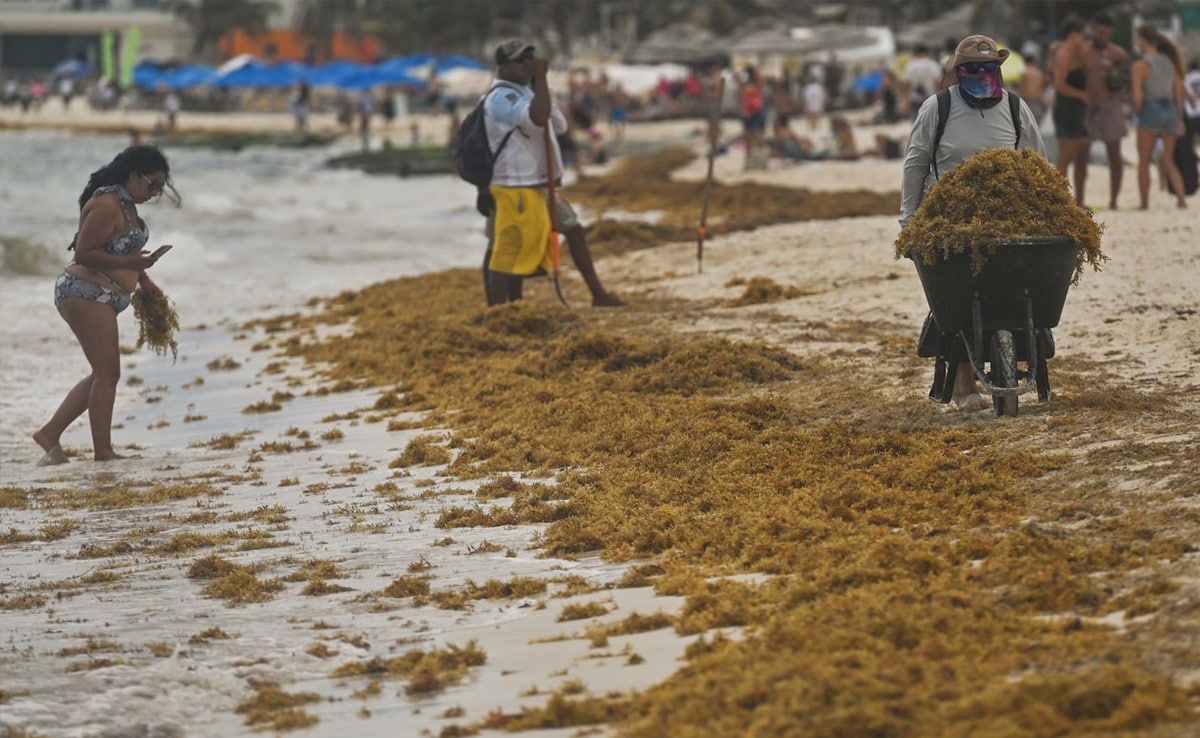
The raft of brown seaweed within the Atlantic Ocean is so huge that it may be seen from area.
An unlimited carpet of seaweed stretching 5,000 miles (about 8,047 kilometres), about twice the width of the US, is ready to trigger issues alongside the seashores of Florida and Mexico, as scientists turn into more and more involved concerning the algae’s results. In response to a report in NBC Information, the raft of brown seaweed within the Atlantic Ocean is so huge that it may be seen from area.
The algae bloom often called the “Nice Atlantic Sargassum Belt” spans from the coast of West Africa to the Gulf of Mexico. It weighs over 20 million tonnes and is the biggest seaweed bloom on Earth.
In open water, these algae are often secure and even helpful, performing as a habitat for some fish, and crustaceans and absorbing carbon dioxide, amongst different issues. Nonetheless, sargassum is being pushed west by ocean currents, and consequently, lots of seaweed are washing up on seashores within the Caribbean and the Gulf of Mexico, as per the outlet. Its rotting can suffocate corals, devastate coastal ecosystems and scale back the standard of the water.
Consultants have warned that this 12 months’s bloom is especially alarming as “invasions of seashores within the coming weeks and months may very well be notably extreme”. Brian LaPointe, a Analysis Professor at Florida Atlantic College’s Harbor Department Oceanographic Institute, advised the outlet, “It is unbelievable. What we’re seeing within the satellite tv for pc imagery doesn’t bode properly for a clear seaside 12 months.”
Regardless of the piles sometimes washing ashore in Might, he claimed that seashores in Key West are already coated within the algae. Seashores in Mexico, together with these in Cancun, Playa del Carmen, and Tulum, are gearing up for a major sargassum buildup this week.

In response to Brian Barnes, Assistant Analysis Professor on the College of South Florida’s Faculty of Marine Science, the quantity of seaweed is rising yearly, reaching record-breaking heights in 2018 and 2022. He claimed that this 12 months, nevertheless, will break earlier information.
As seaweed rots, its influence on human well being can be coming into focus. It releases hydrogen sulfide, which may trigger respiratory issues for vacationers and residents within the neighborhood. Moreover, the removing of tons of of tonnes of algae from seashores is dear and the invasions can even hurt tourism.
Additionally Learn: Amid US Chilly Wave, Frozen Useless Shark Discovered On Cape Cod Seashore
In response to Mr LaPointe, the world’s largest rivers- Congo, Amazon, Orinoco and Mississippi, have all been impacted by deforestation, elevated fertiliser use and biomass burning. “All of that’s rising the nitrogen concentrations in these rivers and so we’re now seeing these blooms as type of a manifestation of the altering nutrient cycles on our planet,” he mentioned. Local weather change, he claimed, can worsen many of those issues by rising flooding and runoff into important waterways.
Mr Barnes continued, “Traditionally, way back to we’ve got information, sargassum has been part of the ecosystem, however the scale now’s simply a lot greater. What we’d have thought was a significant bloom 5 years in the past is not even a blip.”
Featured Video Of The Day
Brothers, 5 And seven, Killed By Stray Canine In Delhi In Final 3 Days

















































